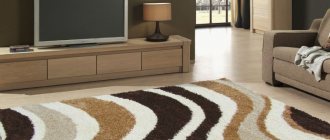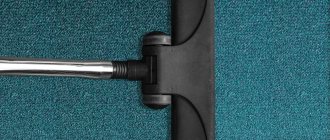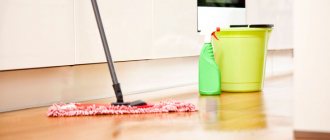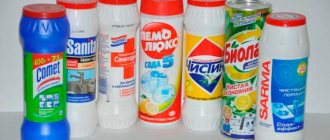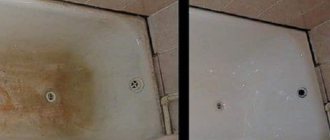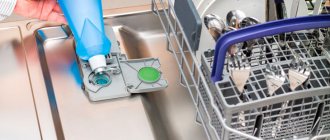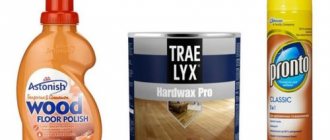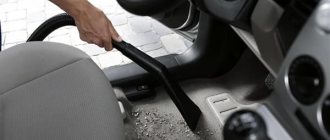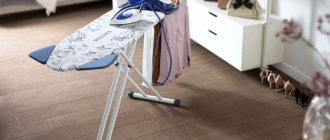Over time, a large number of various contaminants inevitably appear inside the car. They arise for a variety of reasons, transportation of animals, careless positioning of legs, transportation of goods. Dirt can be expressed by stripes from rubber soles, greasy marks, and traces of dog drool. Even if you don’t carry anyone or anything, the interior will gradually become dirty with dust, which will also greatly affect the appearance. You can remove stains from plastic and structured cladding using special detergents. In this article we will look at some of them and look at the details of working with this tool.
Unsightly interior appearance
Some drivers are dishonest about the internal condition of their personal car. They do not visit specialized car washes, and do not clean the interior with chemicals for a long time. This in turn will lead to:
- To unpleasant odors in the car interior.
- The presence of children in the car will lead to the fact that all interior surfaces and carpets will be covered with stains from all sorts of goodies and drinks.
- Transporting all kinds of cargo leads not only to residual odors, but also to pollution.
- Dust, which tends to accumulate in all crevices, will spread throughout the car with air flows from the window and air conditioner. Which can lead to an allergic reaction in the human body.
- Smoking in the cabin will result in the entire car becoming saturated with tobacco smoke, which is very difficult to remove.
- If something has been spilled on a car panel, especially a lighter color, and the stains have not been removed in a timely manner, then over time it will simply be impossible to do this without special automotive chemicals.
If the driver respects himself and his passengers, then the above factors will be enough to think about periodically cleaning the car interior.
Dashboard
Dashboards are made mainly of plastic. For the price, this is an inexpensive and very practical material, which, it would seem, does not require careful maintenance. But this is not true at all. Plastic tends to become electrified quickly. This leads to the fact that all the dust settles on it, not only dirt, but also resins and grease are retained.
Over time, the material may fade and become covered with a web of small scratches that inevitably occur during the operation of the car. Due to all these factors, the plastic quickly wears out and the appearance becomes unusable, even if the car is not yet old. This may not happen if you follow simple rules for caring for your dashboard. Here are some of them:
- Vacuum the interior. Use a vacuum cleaner to remove all debris. After this procedure, the effectiveness of cleaning products will increase several times. To avoid scratches, use a special soft attachment for a vacuum cleaner. Before you start vacuuming, you should shake out the floor mats. You need to be careful around ventilation grilles and handles, as they can easily be damaged.
- Remove dust from the surface of the plastic. A soft sponge or damp cloth is suitable for this. In hard-to-reach places such as the handbrake, gear selector, radio control buttons and other places, a brush with soft bristles is suitable (you can use a toothbrush or cotton swabs). If you used a wet sponge to clean it, you should then wipe it with a dry cloth so that the plastic does not remain wet.
- Remove stains. It is important not to apply the cleaning solution directly to the plastic itself. A suitable detergent or simply liquid soap should be applied to a damp cloth. You need to test the effect of the selected detergent on an inconspicuous area of the plastic, and only then you can distribute it over the entire panel of the car. The best option is to study the instructions on the detergent packaging. Then you should clean until the panel is clean. The sponge or cloth used to clean the panel must be rinsed as soon as it becomes too dirty so as not to spread dirt throughout the car. At the end of the process, wipe with a dry towel.
- Apply a protective agent. After cleaning is completed, a layer of protective agent must be applied to the surface of the plastic. A huge selection that can be found in specialized automotive supply stores or special departments of supermarkets. The plastic surface protectant should only be applied to clean surfaces. A clean sponge or soft cloth will help with this. You should not spray the product on the plastic itself.
- Apply polish. Using polishes, you can add shine to plastic parts using boiled linseed or olive oil. Apply a little oil to the surface to be treated or rub the plastic with a soft cloth. Residues of the product should be removed with a clean, dry cloth. These products can also be purchased at specialized paint stores.
What is polish used for?
Car plastic polish has a composition whose main component is silicone. It also contains moisturizers, wax, fluorine-containing polymers, and binders. Products are available for sale in the form of creams, pastes and aerosols. The latter option is considered more popular due to its relative simplicity and ease of use.
Important! Polishes are used primarily for the restoration of plastic. However, they also contain substances that provide antistatic properties, so dust does not settle on the plastic. And thanks to fragrances, polishes significantly refresh the interior of the car.
Additional care
If the driver smokes, a lot of tar is absorbed into the plastic from cigarette smoke. Special products will help against exposure to ultraviolet rays. They will not only remove old stains, but will also provide a high degree of protection for car parts thanks to the evaporation retardants contained in the products.
Products containing alcohol should not be used to treat plastic parts, as it tends to melt a thin layer of surfaces. This, in turn, will lead to the material fading in the sun. When using polish, you should first wet clean the panel and then let it dry. This will increase the cleaning effect. Then, without pressing hard, rub the polish in with a sponge.
It doesn’t matter what you use to clean your car dashboard - polish, spray or cream, it is important to know that a huge number of counterfeit products are sold. You should try not to purchase such products in small shops or markets. There is no guarantee that if you buy a product in a specialized auto store, it will not turn out to be counterfeit. As a result, it should not be applied to the entire interior of the car.
To ensure the quality of the product, it must be applied to a small area hidden from view. There are many cases when the label says one thing, but the effect of the product turns out to be completely opposite and can cause irreparable harm to the plastic parts of the car interior.
Prevention
It is necessary to promptly wipe the plastic from grease stains, oil, and ink, because fresh dirt is easier to remove than stubborn and dried dirt. It is recommended to purchase a polish for cleaning such surfaces. To save yourself from the need to scrub away mud stains for a long time, you need to systematically wipe the plastic with a special product.
It is recommended to read the operating instructions and user manual before cleaning. Some interior materials may be susceptible to specific types of cleaning agents, or the car manufacturer recommends specific brands of washing agents. It is possible to use folk remedies. Initially, you need to test a new cleaning product on a small area, only then apply it to the entire area of the cabin.
What you need to clean the interior
We have compiled a list of things and products that will be useful for cleaning a car dealership:
- Vacuum cleaner;
- A couple of rags, incl. microfiber;
- Compressed air cylinder (if necessary);
- Hard brush;
- Medium hard brush;
- Soft sponge;
- Container with water;
- Ceiling cleaner;
- Plastic cleaner;
- Seat cleaner (for leather or fabric);
- Glass cleaning composition;
- Floor cleaner;
- Stain remover/soap/dishwashing liquid/washing powder (for fabric interior);
- Soft wipes for the instrument panel;
- Polish;
- Hairdryer;
- Cream (for leather interior)
Prepare the things on the list, set aside 2-3 hours of free time - and your car will shine!
Conclusion
Plastic is a fairly soft and pliable material that requires careful and regular care, even more than metal car parts.
Over time, plastic parts inevitably fade and become more fragile due to abrasion and exposure to ultraviolet radiation. However, you can restore the original attractive appearance of plastic using a high-quality polish.
Auto stores offer a great variety of different auto cosmetics of this nature, but it is important to purchase only the best for your car. Our rating presents the highest quality options for such products, the effectiveness of which is confirmed by numerous reviews from real customers.
Preparation
Throw away the trash. Papers, bags, advertising brochures, bottles, old newspapers should not interfere with cleaning the car interior.
Remove the floor mats from the car. Shake rubber ones out immediately and wash them afterwards. Clean fabric ones with a stiff brush, then vacuum. Next, set the mats aside in a clean, dry place and begin cleaning.
We start cleaning the interior from the top. To begin with, vacuum. If somewhere the dirt does not want to leave the heated place, use a compressed air cylinder. These cans are used to clean keyboards, processors and other computer components.
Next, move on to the areas: ceiling, seat upholstery (covers), doors, floor, plastic. Each zone is cleaned separately; dirt from the ceiling is not smeared onto the seats and vice versa.
What should you not do when using plastic polish?
To avoid damage to the plastic of the car interior, it is important to follow the following recommendations:
- Open your car windows or doors before using polish. Strong fragrances may cause nausea and dizziness;
- It is not recommended to apply any compounds to the pedals and steering wheel, so as not to damage the coating;
- apply the product gradually, and not immediately to all damaged plastic parts;
- do not mix several different compounds in one area, as they may react and damage the plastic;
- Use only soft fabrics, preferably microfiber, for treatment. Fleecy, rough fabrics can damage the coating and add new scratches to it.
Seat upholstery
Leather seats or leatherette upholstery are the fastest and easiest to clean. Light dirt can be easily washed off with a simple soap solution. For stubborn stains you will need car chemicals. The main thing is not to use hard brushes, otherwise the upholstery will be damaged.
Apply the cleaner to the seat, wait 5 minutes and rinse off first with a damp sponge, then with a dry microfiber.
Fabric upholstery takes a little longer to clean. To begin with, spray an aerosol on the seat, then rub it into the upholstery with a sponge or brush. Dirt is collected after 3-5 minutes with damp microfiber. The main thing is to rinse the rag as often as possible.
If the fabric is light, you need to clean the entire upholstery. This way there will be no divorces.
You can also clean the upholstery with a washing vacuum cleaner, but the composition will not have time to “take hold” before it is immediately collected. It is also not recommended to use the powder - it is impossible to completely wash it off. But it really ruins the upholstery.
Let's talk separately about stain removal. There is serious dirt that is not difficult to remove even without auto chemicals.
Coffee stains
These stains can be easily removed using regular dishwashing detergent or liquid soap. The main thing is not to rub too hard so as not to damage the upholstery.
If the coffee stain on the seat is old, use the heavy artillery: vinegar and water. Leave the solution for 10 minutes, then rinse thoroughly and dry. If you apply a cloth soaked in ethyl alcohol to the stain, the stain will come off quickly.
Mud stains
Make sure the stain is completely dry so that the dirt doesn't get smeared when you clean it up. Remove dried dirt with a brush, then use a cleaner. You can also use a special gel to clean your hands from heavy contaminants, such as fuel oil, oils, soot, etc.
Oily stains
Easy to clean with dish soap. If yours doesn’t work, use a mixture of water, ammonia and vinegar. Apply, wait 10 minutes and rinse with water. Dry thoroughly.
Blood stains
To remove a blood stain, wash the stained area with cold water. Once the stain is wet, apply a soap solution and scrub with a brush. Rinse off the solution with warm water. Repeat the procedure if the stain is not washed off.
Cases
Fabric and velor covers are easiest to simply wash. If there are stains, wash them with a simple powder and water or stain remover. If the cover has lint, wash it, dry it, and then comb it.
Only covers made of natural or artificial leather should not be washed. They can simply be treated with auto chemicals or the same soap solution.
How to remove an old trace
Traces of fountain pen paste on the armrests and marks from a felt-tip pen are also removed. You need to wet the napkin with Wd-40 aerosol preparation and remove the dye from the surface. The ingrained dirt is removed from the microfibers with an alcohol-based aqueous solution. The mixture is made 1 to 1, vodka or medical alcohol is poured into the water, and the mixture is rubbed into the stain with a wet cloth. Scotch tape and glue are removed with a cloth moistened with gasoline or acetone.
After treatment with special means, the plastic is thoroughly washed off with clean water and wiped with a dry cloth.
Finish
The salon is almost ready, just a little remains: to polish it up.
Wipe the instrument panel with special soft wipes. Microfiber can leave lint or dust particles, paper towels can scratch the plastic.
Apply polish to a soft sponge and spread over plastic parts. Apply sparingly, otherwise it will attract a lot of dust.
Leather seats can be treated with a special cream that will add shine and restore softness.
Finally, open the doors and dry out the interior. You can also use a hairdryer. Afterwards, put down the rugs.
After cleaning, feel free to show the car to buyers - it’s nice to be in a clean car!
Did you like the material? Leave your comments at the bottom of the article.
TOP 5 matte polishes for car interior plastic (rating)
| Polish name | Polishing type | Key Advantage | Price |
| Politura Gloss | Matte | Removes surface defects and returns original newness | 240 rub. for 0.5 l |
| Turtle WAX | Matte | Adds a matte shine to all plastic, vinyl and rubber surfaces | 358 rub. for 0.5 l |
| Lavr Ln1459-L | Matte | Provides an antistatic and water-repellent effect, protects against the damaging effects of ultraviolet radiation | 224 rub. for 0.12 l |
| GOODYEAR GY000714 | Matte | Treatment with the composition protects against ultraviolet radiation. The product has an antistatic effect | 215 rub. for 0.4 l |
| FILL Inn FL077 | Matte | Gives plastic a new look and reliably protects against ultraviolet rays | 200 rub. for 0.4 l |
Important! Matte polish differs from glossy polish in that it removes bright shine and reflections from surfaces, while removing various plastic defects. Glossy polish, on the contrary, forms a shiny film on the surface, which is slightly slippery. Due to the presence of silicone components in the composition, such products effectively eliminate existing scratches and protect against the appearance of new abrasions later.
And finally...
The very last step in cleaning a car is drying it. If you do not clean carefully, excess moisture can cause the ceiling upholstery to peel off. In addition, any moisture is, first of all, mold and the unpleasant odors associated with it. That is why it is recommended to dry and ventilate the car interior after dry cleaning for at least 7 hours. During this time, not only excess moisture will disappear, but also those “chemical” odors that specialized cleaning products leave behind.
Homemade degreaser
It is easy to make a degreaser at home. To do this, you need to mix lemon or lime juice, vinegar and water in equal proportions. Using a damp towel, apply the homemade solution to the stain and rub.
Advice. It is better to use distilled water, but tap water will also work.
After treatment, it is important to remove the product completely and ensure that there is no foam or soap residue left for dirt to stick to.
Carburetor cleaners instead of solvents
Some people prefer to use solvents such as carburetor cleaners instead of dry cleaning solvents. But it is important to use such products, solvents and cleaning products, in a well-ventilated area.
There are stains that are not only oily, but also dirty. It is therefore important not to apply undiluted detergent to such surfaces. Otherwise, such actions will likely result in a film that attracts dirt and is difficult to remove.
And finally. Before you start removing oil stains, you need to stock up on the following things:
Specialized scrub
You can find special products for removing oil stains on sale. Be sure to follow the instructions that are always provided by the manufacturer.
A scrub with a degreaser is most effective. This product is usually enough to remove oil stains, especially fresh ones.
First, you need to apply the scrub to the dirt and let it work. If the degreaser does not remove the stain, you can use a steam cleaner for greater effectiveness. The steam warms up the fibers of the upholstery of chairs or rugs and helps remove stains.
Soda against stains
Soda perfectly absorbs fats. Therefore, it is necessary to pour white powder onto the stain and leave it for 10-15 minutes. After this, the soda should be removed using a vacuum cleaner or a regular brush.
If the stain is large or too oily, the procedure can be repeated by applying more soda to the stain. In this case, the cycle can be repeated several times until the result is satisfactory.
We will clean the doors and car panels
The next step is cleaning the doors and dashboard. Let's start with the doors.
The trim can be washed in the same way as the ceiling and with the same products. But it is advisable to clean plastic and chrome elements with special products for metal and plastic. Then the surface must be treated with polish with an antistatic agent and wiped dry.
First treat the panel with a brush to remove dust particles around the buttons and switches, and then treat it with any detergent for plastic.
We wash mirrors and glass with any product intended for this purpose and wipe them dry.

